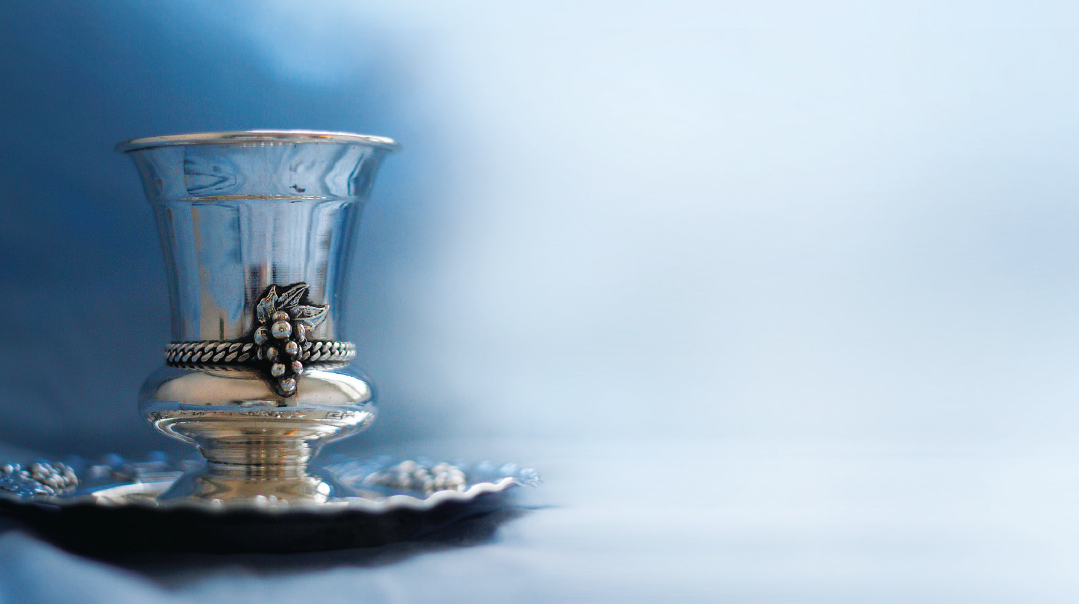Fake it — Make it!

By giving to others we can carry out Chazal’s requirement to be happy in Adar

“Build me a sanctuary, and I will dwell among them.” (25:8)
The Gemara says, “Just as when Av arrives, we lessen our joy, when Adar comes, we increase our joy” (Ta’anis 29). We understand why Av is sad, since these were the days leading to and including the destruction of the Beis Hamikdash. But why must we increase our joy when Adar begins? The miracle of Purim only happened in the middle of the month.
The Meor Einayim answers, “The names of the months have meaning…. The explanation of Adar is, “Alef dar — the Alef dwells.” The Alef is referring to the Alufo Shel Olam — the Master of the World. “Alef dar” means that Hashem dwells with His people and His Shechinah resides in This world. So the joy of Adar is that Hashem’s Presence resides, and is perceived, in the world (Rav Elimelech Biderman, Torah Wellsprings).
“Happy Rosh Chodesh Adar, Adina!”
I hung up the phone with a smile on my face. What a difference for Adina between this year’s Adar and last year’s.
Last winter, Adina’s teenage son was ill. As the weeks progressed, the situation worsened, climaxing right around Purim time.
The parshah that’s read on Shabbos is related to the time of year it’s read. Parshas Terumah is read in the month of Adar, because their themes are similar. Terumah teaches us how to build the Mishkan. The purpose of the Mishkan was so Hashem can dwell among us. Adar also signifies Hashem’s dwelling among us.
Now we understand why the Gemara compares and contrasts Adar to Av, as it says, “Just as when Av comes, we lessen our joy, when Adar comes, we increase joy.” Why is Av mentioned? It could have simply said, “When Adar comes, we increase joy.” The answer is the Gemara is showing us that the joy of Adar is the exact opposite of the mourning in Av. In Av we mourn the destruction of the Beis Hamikdash, and in Adar we rejoice with building the Mishkan — Hashem’s presence in the world.
Adina recalls how that Purim day was probably one of the hardest in her life. Her son’s condition was worsening, with the doctor talking about imminent hospitalization.
At the same time, Adina had a houseful of other kids who wanted to celebrate Purim!
She spent Purim navigating a dichotomy of extreme emotions. Parts of the day she was at her son’s bedside, caring for him with a heavy heart. Then, when she could, she’d go out to her other kids and laugh and sing with them, because, after all, it was Purim! She had to be happy! Even if she knew she was faking it, she wouldn’t let her other children see that.
In a practical sense, what does it mean when we say that Hashem’s Presence is among us?
In Adar, we are urged to increase our simchah. Joy can be attained in several ways. Ideally, we should be happy with our problems, because of our belief that everything is for the good. But when this level is beyond us, there certainly are several other tools people can use to make themselves happy in Adar, and during any other month of the year. One idea is to make the problems small. Everyone goes through some form of hardship, but it is up to each individual to decide how seriously he views his problems.
Another important tactic is based on the phrase: “Mishenichnas Adar marbim b’simchah.” When Adar comes in, we increase our simchah. Why is this written in plural? Doesn’t each individual have an obligation to be happy? The Sfas Emes teaches that this indicates that happiness is attained by making others happy. By giving to others we can carry out Chazal’s requirement to be happy in Adar.
Looking back, despite the strangeness of cartwheeling between two such different behaviors, Adina felt that these “gymnastics” were really balancing each other. The joy she was forced to display for her family gave her the strength to care for her son without despair.
“I was a mother at her best,” she says, “trying to give each child what they needed. And it showed me what heights a Yiddishe mama can reach. We’re capable of producing joy even if all we want to do is to cry.”
(Originally featured in Family First, Issue 881)
Oops! We could not locate your form.


